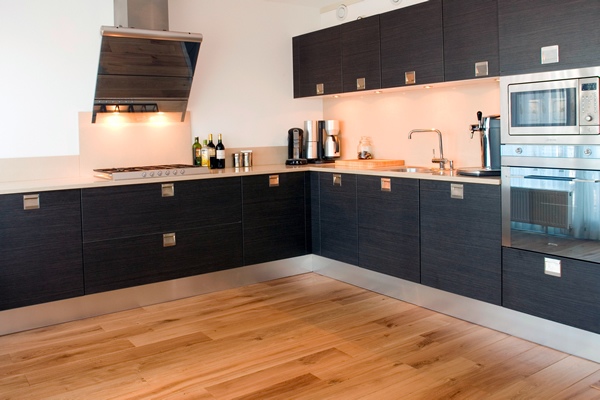Where To Use Engineered Oak Flooring
18th Dec 2013 @ 15:57
Engineered Oak Flooring allows people to lay an oak floor in areas where they traditionally would not have been able to or have been advised to. From above an engineered oak board is indistinguishable from a solid oak board. Our engineered oak flooring is made up of 6mm of solid oak, which is bonded to a strong and stable, tongue and grooved ply-board base. As with the solid oak flooring, the engineered oak flooring is available in a number of various widths, lengths and grades.
The major advantage of choosing an engineered oak flooring is the ability to use the boards in areas which are not suitable for solid oak flooring. Traditional solid oak flooring is much more susceptible to movement caused by changes in humidity. Engineered oak flooring is much less prone to these changes.

Kitchen, bathrooms and conservatories are all areas which have regular changes in humidity. If a solid oak floor was fitted in these areas, the boards are much more likely to succumb to movement and problems such as cupping then a engineered oak floor. In these sort of areas especially it is also important to use a top quality finish, such as the Blanchon Hard Waxoil, to seal and protect the boards.
Many new renovation projects nowadays include the fitting of underfloor heating systems. Traditionally with solid oak flooring, this would have caused problems to the boards, making them unsuitable. However this is yet another situation where engineered boards excel. The ability to cope with constant temperature changes makes engineered oak flooring perfect for the job.
A more common need nowadays is to lay an oak floor over the top of an concrete floor. This is commonly done by glueing down the oak boards. The proneness to movement of solid oak flooring means it is not recommended that a board any wider then 120mm is glued down. For situations where a wider board is required, once again engineered oak offers the solution. Engineered oak flooring can be glued to a concrete floor in any width. When glueing down any type of oak flooring, it is vital a suitable adhesive is used. We always recommend using a MS Polymer Flexible Adhesive. This type of adhesive is strong enough to keep your flooring in place, whilst flexible enough to allow for some natural movement in the wood.
The traditional methods of nailing or screwing down an oak floor can also be applied to engineered oak flooring.

Further to the methods above, an engineered oak floor is also able to be laid in the form of a floating floor. This method involves laying the boards over the top of the sub-floor, with no form of direct fixing to the floor. Instead the tongue and grooves of each boards are glued together. This method is usually laid over some form of underlay. We do not recommend using this method when laying a solid oak floor.
If you have any further questions on whether your area is suitable for an engineered oak floor or a solid oak floor, please give us a call on 01538 304584.




Add a comment